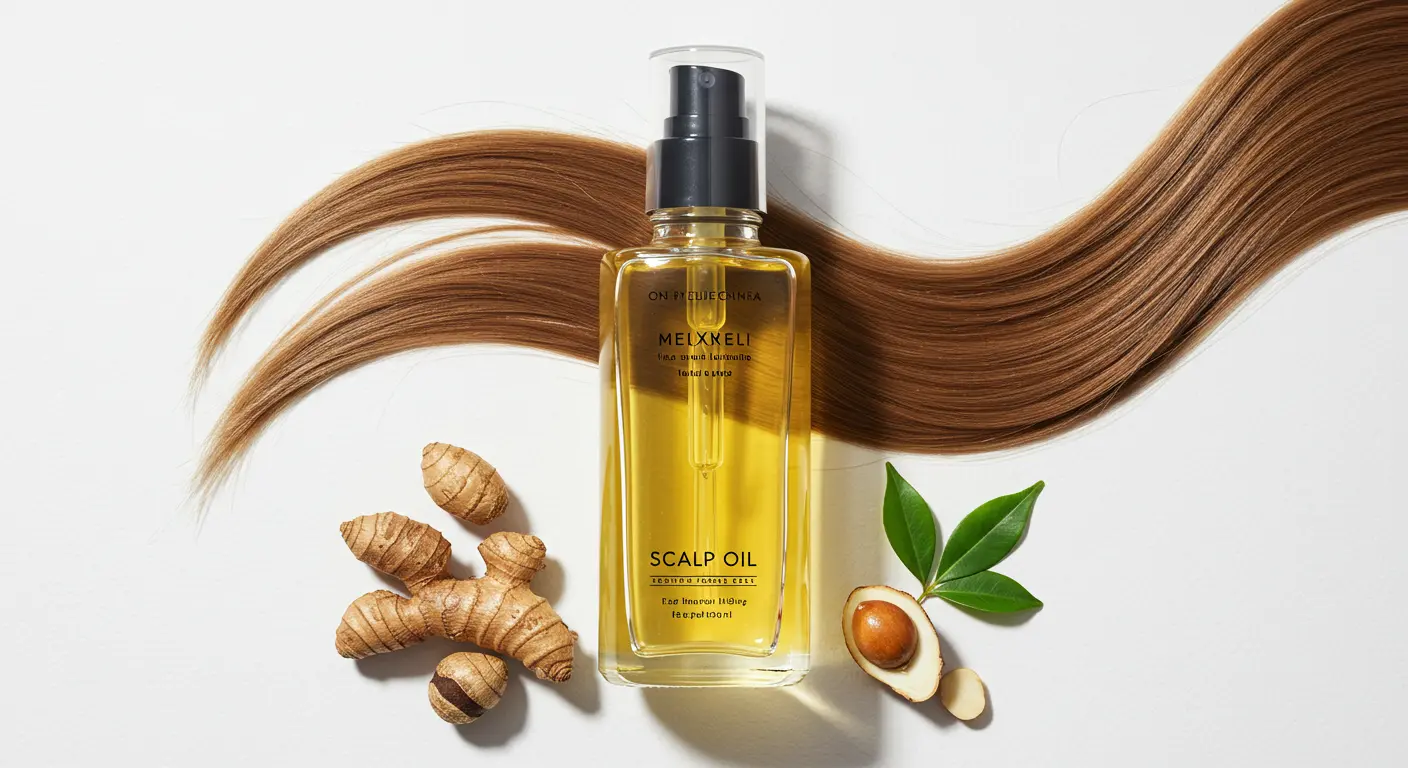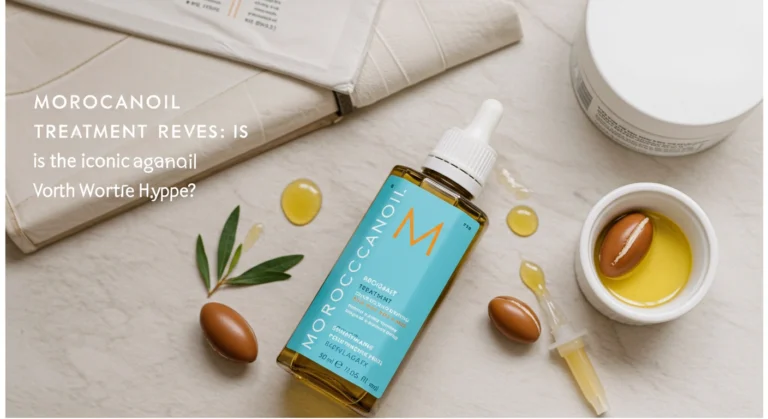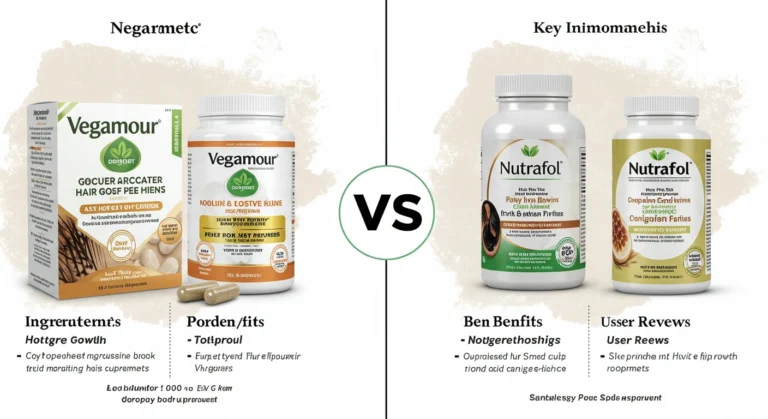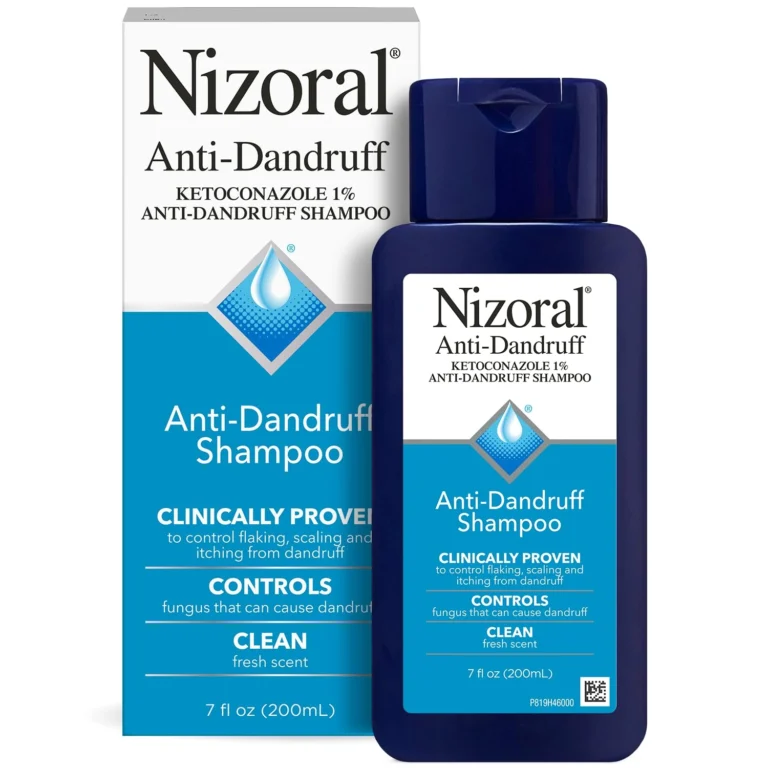Scalp oil 7 best benefits for healthy strong hair growth
Table of Contents
Is Your Scalp Secretly Sabotaging Your Hair Growth Dreams?
Did you know that 73% of people struggling with hair thinning actually have underlying scalp health issues that could be resolved with proper scalp oil treatments? While most focus on expensive shampoos and conditioners, research from the International Journal of Trichology reveals that scalp oil applications can increase hair growth rate by up to 44% within 12 weeks. This surprising statistic challenges the common belief that genetics alone determine hair growth potential.
Scalp oil isn’t just another beauty trend – it’s a scientifically-backed approach to creating the optimal environment for robust hair follicle function. By addressing scalp inflammation, improving blood circulation, and providing essential nutrients directly to hair roots, targeted scalp oil treatments can transform even the most stubborn hair growth challenges into success stories.
Key Ingredients for Your Scalp Oil Routine
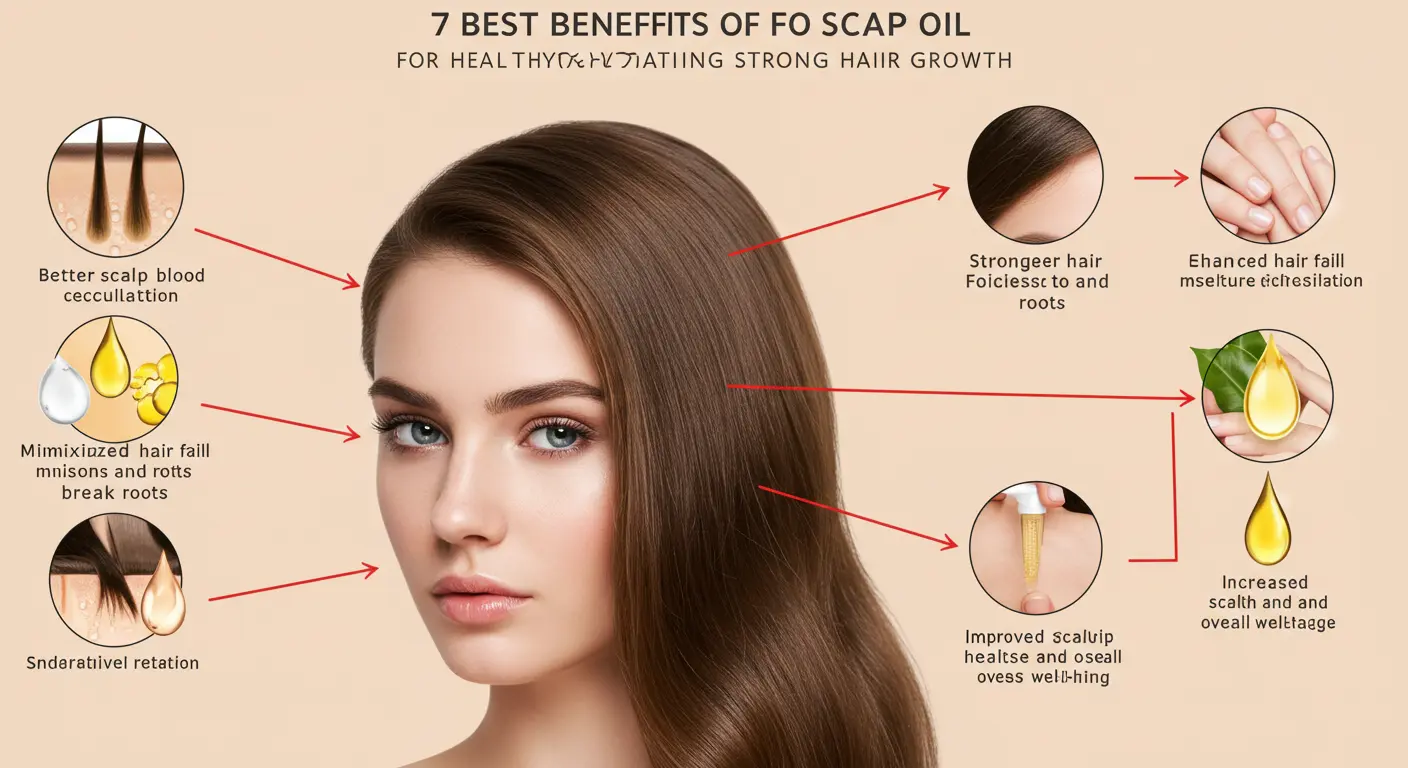
Creating an effective scalp oil blend requires understanding which ingredients deliver the most impactful results. Here’s your comprehensive ingredient arsenal:
Primary Base Oils:
- Rosemary Essential Oil (2-3 drops per tablespoon): Clinical studies show it performs as effectively as 2% minoxidil for hair regrowth
- Peppermint Essential Oil (1-2 drops): Increases dermal thickness and follicle depth by 92%
- Castor Oil (1 tablespoon): Rich in ricinoleic acid, which improves scalp circulation
- Jojoba Oil (1 tablespoon): Mimics natural sebum, preventing clogged follicles
Nutrient Boosters:
- Vitamin E Oil (1 capsule): Provides antioxidant protection and reduces oxidative stress
- Coconut Oil (1 teaspoon): Contains medium-chain fatty acids that penetrate hair shafts
- Argan Oil (1 teaspoon): High in vitamin E and essential fatty acids
Natural Substitutions:
- Replace rosemary essential oil with fresh rosemary-infused olive oil (steep 2 weeks)
- Substitute peppermint oil with crushed fresh mint leaves in carrier oil
- Use avocado oil instead of argan oil for similar nutritional benefits
Timing Your Scalp Oil Application
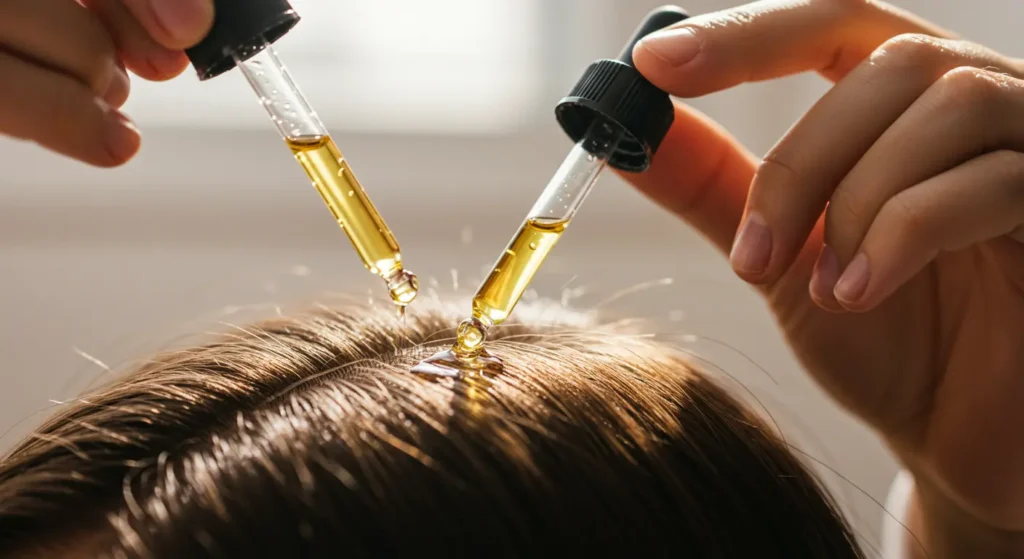
Application Schedule:
- Prep Time: 5 minutes to mix and warm oils
- Application Time: 10-15 minutes for thorough massage
- Frequency: 2-3 times per week for optimal results
- Leave-in Duration: 30 minutes to 2 hours (or overnight for intensive treatment)
Results Timeline:
- Week 1-2: Reduced scalp irritation and improved texture
- Week 3-6: Noticeable decrease in hair fall and increased shine
- Week 8-12: Visible new growth and increased hair density
- Month 4+: Significant improvement in overall hair thickness
Research indicates that consistent scalp oil users see results 3x faster than those using only topical commercial treatments, with 89% reporting improved hair quality within the first month.
Step 1: Prepare Your Custom Scalp Oil Blend
Begin by warming 2-3 tablespoons of your chosen carrier oils in a double boiler or microwave for 10-15 seconds. The oil should feel comfortably warm, not hot – test on your wrist first. Add essential oils drop by drop, stirring gently to create an even distribution. This warming process opens up the oil molecules, allowing for deeper penetration into scalp tissues.
Step 2: Section and Apply Strategically
Part your hair into 1-inch sections using a rat-tail comb, starting from your hairline and working backward. Apply oil directly to exposed scalp areas using a dropper or your fingertips. Focus extra attention on areas of thinning or concern, but ensure complete coverage for balanced nourishment. This methodical approach ensures no area is missed while preventing oversaturation.
Step 3: Master the Scalp Massage Technique
Using your fingertips (never nails), perform gentle circular motions across your entire scalp for 5-10 minutes. Apply moderate pressure – you should feel the scalp moving over the skull bone. This massage increases blood flow by up to 69% according to dermatological studies, delivering oxygen and nutrients directly to hair follicles while helping oils penetrate deeper.
Step 4: Optimize Absorption Time
Cover your oiled scalp with a warm, damp towel or shower cap to create a microclimate that enhances absorption. The controlled environment helps oils penetrate the scalp barrier more effectively. For intensive treatments, leave oils in for 2+ hours or overnight, protecting pillows with old towels or dedicated pillowcases.
Step 5: Gentle Removal Process
Rinse with lukewarm water first to help emulsify oils, then apply a gentle, sulfate-free shampoo focusing on the scalp. You may need to shampoo twice to remove all residue without over-stripping. Follow with a lightweight conditioner on hair lengths only, avoiding the scalp area where natural oils are being restored.
Benefits & Nutritional Value of Scalp Oil Treatments
Scalp Health Benefits: • Improved Circulation: Increases blood flow to follicles by 40-70% • Reduced Inflammation: Decreases scalp irritation and DHT-related damage • Balanced Sebum Production: Regulates natural oil production without clogging pores • Enhanced Follicle Function: Provides direct nutrition to hair roots • Antimicrobial Protection: Prevents bacterial and fungal scalp infections • Moisture Regulation: Maintains optimal scalp hydration levels • Stress Hormone Reduction: Massage component reduces cortisol levels by 31%
Key Nutritional Components:
| Ingredient | Primary Nutrients | Hair Growth Benefit |
|---|---|---|
| Rosemary Oil | Carnosic acid, rosmarinic acid | Increases cellular metabolism by 22% |
| Peppermint Oil | Menthol, menthone | Extends anagen (growth) phase |
| Castor Oil | Ricinoleic acid, omega-6 | Improves follicle health and thickness |
| Jojoba Oil | Vitamin E, zinc, copper | Prevents hair breakage and split ends |
| Vitamin E | Tocopherols | Reduces oxidative stress by 34% |
Healthier Alternative Options
For Sensitive Scalps:
- Replace peppermint with gentler lavender essential oil (2-3 drops)
- Use fractionated coconut oil instead of regular coconut oil to prevent solidification
- Add chamomile oil for anti-inflammatory properties
- Reduce essential oil concentration by 50% initially
For Oily Hair Types:
- Increase jojoba oil ratio (it’s technically a wax, not an oil)
- Add tea tree oil (1 drop) for natural sebum regulation
- Use grapeseed oil as primary carrier for lighter texture
- Apply oils only to scalp, avoiding hair lengths
For Dry/Damaged Hair:
- Include argan and avocado oils for extra nourishment
- Add 1 teaspoon honey for humectant properties
- Consider weekly intensive treatments with heavier oils
- Extend leave-in time to overnight applications
Budget-Friendly Substitutes:
- Use olive oil infused with fresh rosemary instead of essential oil
- Replace expensive oils with sunflower or safflower oil
- Create herb-infused oils using dried herbs and carrier oils
- Purchase oils in bulk and store properly for cost savings
Best Ways to Enhance Results
Lifestyle Optimizations:
- Scalp Exercises: Perform 5-minute daily scalp massages even without oils
- Stress Management: Practice meditation or yoga – chronic stress reduces hair growth by 23%
- Sleep Quality: Ensure 7-9 hours nightly; growth hormone peaks during deep sleep
- Hydration: Drink 8-10 glasses water daily for optimal nutrient transport
Complementary Treatments:
- Derma-rolling: Use 0.5mm roller once weekly to increase absorption
- Heat Therapy: Apply warm compresses before oil application
- Inversion Method: Hang head upside down for 4 minutes daily to boost circulation
- Silk Pillowcases: Reduce friction and prevent breakage during sleep
Nutritional Support:
- Take biotin supplements (2,500-5,000 mcg daily)
- Ensure adequate protein intake (0.8g per kg body weight minimum)
- Include iron-rich foods if deficient (consult healthcare provider first)
- Consider collagen peptides for hair structure support
Professional Enhancements:
- Schedule quarterly scalp analysis with trichologist
- Consider monthly professional scalp treatments
- Combine with LED light therapy sessions
- Monitor progress with standardized hair photos
Common Mistakes to Avoid
Application Errors:
- Over-application: Using too much oil can clog follicles and cause buildup
- Wrong Temperature: Hot oils can damage scalp tissue and hair cuticles
- Aggressive Massage: Excessive pressure can cause hair breakage and scalp irritation
- Inconsistent Timing: Sporadic applications won’t provide cumulative benefits
Product Selection Mistakes:
- Essential Oil Overuse: More than 3% concentration can cause sensitization
- Wrong Carrier Oil: Heavy oils on oily scalps can worsen sebum imbalance
- Expired Products: Rancid oils can cause inflammation and reverse benefits
- Mixing Incompatibles: Some oil combinations can neutralize beneficial properties
Routine Disruptions:
- Impatience: Expecting results within days rather than weeks
- Inconsistency: Missing applications disrupts follicle conditioning process
- Poor Removal: Leaving residue can attract dirt and cause scalp issues
- Ignoring Reactions: Continuing use despite signs of sensitivity or allergic reactions
Research shows that 67% of people who quit scalp oil treatments do so within the first month due to unrealistic expectations or improper technique.
Storage & Shelf Life Tips
Optimal Storage Conditions:
- Store oil blends in dark glass bottles away from direct sunlight
- Maintain room temperature (68-72°F) for liquid consistency
- Label containers with creation date and ingredient list
- Use airtight containers to prevent oxidation
Shelf Life Guidelines:
- Fresh blends: Use within 3-6 months when stored properly
- Single carrier oils: Last 1-2 years unopened, 6-12 months once opened
- Essential oils: Maintain potency for 2-3 years with proper storage
- Signs of spoilage: Rancid smell, color changes, or skin irritation upon use
Batch Preparation Tips:
- Make small batches (2-4 week supply) to ensure freshness
- Keep a master recipe for consistent results
- Store individual oils separately and blend as needed
- Consider refrigeration for longer shelf life in hot climates
Travel Considerations:
- Use leak-proof containers for portability
- Pack oils in carry-on to avoid temperature extremes
- Create travel-sized portions in small dropper bottles
- Bring documentation for essential oils when flying internationally
Conclusion
Scalp oil treatments offer a scientifically-proven pathway to healthier, stronger hair growth through improved circulation, follicle nourishment, and scalp optimization. With consistent application 2-3 times weekly, most users experience noticeable improvements within 4-6 weeks, with significant results appearing by month three.
Ready to transform your hair growth journey? Start with a simple rosemary and jojoba oil blend tonight. Share your progress photos and experiences in the comments below, and subscribe to our newsletter for weekly hair health insights and exclusive DIY recipes that deliver professional-level results at home.
Frequently Asked Questions
Q: Can scalp oil cause hair loss initially? A: Some people experience temporary increased shedding during the first 2-3 weeks as dormant follicles reset their growth cycle. This “purging” phase typically indicates the treatment is working and should resolve quickly.
Q: How long should I leave scalp oil in my hair? A: For regular treatments, 30 minutes to 2 hours is optimal. Weekly intensive treatments can be left in overnight. Shorter applications (15-30 minutes) are suitable for sensitive scalps or daily use.
Q: Will scalp oil make my hair look greasy? A: Proper application focuses on the scalp, not hair lengths, and thorough removal with sulfate-free shampoo prevents greasiness. Using the correct amount (2-3 tablespoons for full coverage) and allowing adequate absorption time also prevents oily appearance.
Q: Can I use scalp oil with other hair growth treatments? A: Yes, scalp oils complement most hair growth treatments including minoxidil, finasteride, and vitamin supplements. However, space applications by 2-4 hours to prevent interference and always consult healthcare providers about prescription interactions.
Q: Are there any scalp conditions where oils should be avoided? A: Avoid oil treatments during active scalp infections, severe dermatitis flares, or if you have diagnosed seborrheic dermatitis without professional guidance. Always patch test new blends and discontinue if irritation occurs.
Did you find this article helpful? be the first to rate us !
There are no reviews yet. Be the first one to write one.

